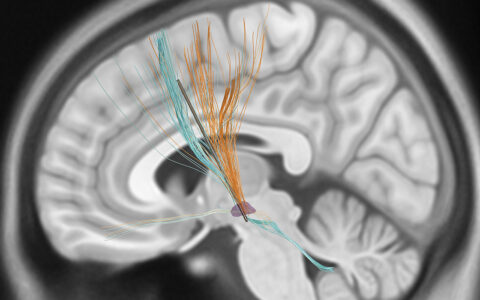The opioid crisis is increasingly extending its fingers into a fragile population – older adults. The average age of hospital admission for substance use treatment has risen, and ED visits for overdoses in patients 65 and older increased 220 percent from 2006 to 2014 in the United States.
At Vanderbilt University Medical Center, health care leaders in the Division of Geriatrics are making far-reaching efforts to turn the tide in Middle Tennessee and create a template for broader implementation. Integral to this effort is the recent recruitment of Kimberly J. Beiting, M.D., medical director of the inpatient geriatrics consult service, who began researching geriatric opioid use disorder on the streets of Chicago before moving to Tennessee.
“Opioid risk assessment is a required [merit-based incentive payment system] measure for our geriatric workforce enhancement programs,” said Harvey J. Murff, M.D., director of the Division of Geriatric Medicine. “Knowing Dr. Beiting’s passion for helping patients with these disorders, we asked her to join us and bring some of the curriculum she developed in Chicago to plug into our program as we work to reach a large audience.”
Vanderbilt’s Jim Powers, M.D., and Sandra Simmons, M.D., manage 15 of these geriatric workforce enhancement programs. Beiting has joined one which educates both geriatric providers and older adults on vulnerabilities related to substance misuse or overuse.
Opioid Misuse Doesn’t Discriminate
“There are widely held beliefs among clinicians and the public that older adults do not develop or experience substance use disorder,” Beiting said. “But with any habit – like smoking or drinking – it doesn’t stop just because you hit the age of 65. The same goes for any other substance use.”
Specific factors that may complicate opioid use in older adults include chronic pain, multimorbidity and cognitive impairment. These may all increase vulnerability to adverse drug events and drug interactions, use disorders, and overdose, especially in the context of physiologic changes of aging, Beiting said.
“In this population where opioid use disorder often flies under the radar, we need to expand both screening and the number of health care providers who can treat it.”
“Overall, older adults have more heart disease, lung disease, liver disease etc., making them less likely to be able to recover from an overdose.”
Beiting says opioid risk assessments are also ordered less often for older patients, even as characteristics of aging frequently raise or obscure the risk of overdose, addiction and accidental death in this population.
Outreach and Education
Vanderbilt is working on the problem through efforts to predict hotspots of misuse and educate health care providers on the high rates and vulnerabilities of older adults, along with tips for becoming confident prescribers of buprenorphine-naloxone (Suboxone®).
“Suboxone is an effective treatment for opioid use disorder, reducing relapse, overdose and death, and can be used as a long-term therapy,” Beiting said.
Yet Suboxone use remains low among older adults and there is much variability in providers’ knowledge and comfort with prescribing it, Beiting says. Updated practice guidelines in allow physicians, physician assistants and nurse practitioners to prescribe Suboxone without the previously required 8-hour training by submitting for a waiver from the Substance Abuse and Mental Health Services Administration.
“I think this is the biggest area for advocacy,” Beiting said. “In this population where opioid use disorder often flies under the radar, we need to expand both screening and the number of health care providers who can treat it.”
Powers, Beiting and their colleagues are introducing a new curriculum to educate seniors in the risk of inadvertent overdose and the benefits of keeping naloxone (Narcan®) nearby. It is being distributed to five subsidized senior living high-rises in Nashville.
“There are real needs for pain control, so we aren’t going in as opposed to pain medications. But accidents happen when a nightcap or a Valium are mixed in with the medications, or when someone accidentally duplicates a medication dose,” Powers said.







